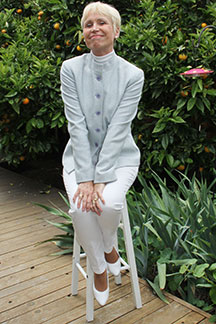Germantown, Pennsylvania, has a rich history that stretches back over 300 years to the arrival of the first German immigrants in the United States. A friend recently showed me a postage stamp commemorating the 300th anniversary of this historic event. Issued in 1983, the stamp piqued my interest. As a German immigrant myself, I wondered: Where did these early Germans come from, and where did they settle?

The first German immigrants arrived in the United States in 1683. www.walled-in-berlin.com
History of Germantown
On July 6, 1683, the British-captained ship, Concord, set sail from Rotterdam, arriving in Philadelphia exactly three months later, on October 6. Aboard the vessel were 13 families – 35 people in total, bound for a new life. Most of the immigrants hailed from Krefeld and Kaldenkirchen, towns in North-Rhine Westphalia near the Dutch border and from the Rhineland-Palatinate region around Worms. This was the first documented group of German migrants to the U.S., and they were mostly Quakers and Mennonites seeking religious freedom and better opportunities.
Philadelphia in the 1600s
At the time of their arrival, Philadelphia was little more than a small settlement with just two streets. The immigrants decided to settle about six miles northwest of the city, clearing oak trees along the path that led back to Philadelphia. Each family had arranged to purchase 200 acres of land before leaving Europe. By the following year, they had built 12 simple log cabins on their land and named their new settlement Germantown. In 1854, this area was incorporated into the city of Philadelphia.
Germantown’s Population in 1600s and 1700s
The early settlers in Germantown were a diverse group. Along with Quakers and Mennonites, the population included Pietists, members of the Reformed Church, and Lutherans. Over the next 25 years, the town grew from just 35 inhabitants to 397. Three-quarters of its inhabitants were of German descent, while the remaining quarter were Dutch and British immigrants. Despite the German roots of most settlers, the town never became a “German enclave.” This was due in part to the fact that most of the early settlers spoke Dutch, as many had come from areas near the Dutch border. As a result, Germantown remained a multicultural community.
Although it was named Germantown, the town remained largely Dutch-speaking until 1709, when several Dutch families moved westward, and a wave of major German immigrations further swelled the population. This influx of German-speaking settlers helped shape the town’s identity and over time, it became more distinctly German.
Germantown’s Population in the 21st Century
Today, Germantown is a vibrant part of Philadelphia, made up to of two neighborhoods: Germantown and East Germantown. Over the centuries, it has played an important role in American history. In 1688, it was the birthplace of the American abolitionist movement, with the first formal petition against slavery being signed there. In 1791, the first Bank of the United States opened in the neighborhood.
During the early 20th century, approximately 140,000 African Americans moved from the South to Philadelphia and Germantown in the Great Migration. Many more followed during the 1940s and 1950s. According to the 2010 U.S. Census, the population of Germantown was 77% Black, 15% White, 3% Hispanic, and 2% Asian. East Germantown had a population that was 92% Black, 3% White, 2% Hispanic, and 2% Asian.
Germantown’s story is one of growth, diversity, and change, reflecting the broader patterns of American immigration and social development.
For a sneak peek at the first 20+ pages of my memoir, Walled-In: A West Berlin Girl’s Journey to Freedom, click “Download a free excerpt” on my home page and feel free to follow my blog about anything German: Historical or current events, people, places or food.
Walled-In is my story of growing up in Berlin during the Cold War. Juxtaposing the events that engulfed Berlin during the Berlin Blockade, the Berlin Airlift, the Berlin Wall, and Kennedy’s Berlin visit with the struggle against my equally insurmountable parental walls, Walled-In is about freedom vs. conformity, conflict vs. harmony, domination vs. submission, loyalty vs. betrayal.









